Fostering Sustainability Through Watershed-Based Education
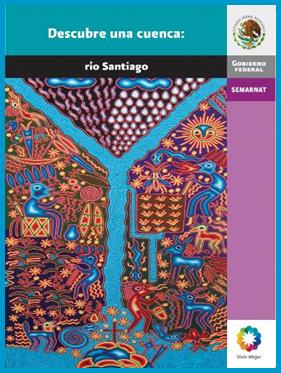
PDF: VazquezandUribespring2013
Abstract: Daily news relentlessly confirms that we have not been able to find a balance between the environment, the economy, society and culture. The trend of worldwide development is increasingly far from sustainability and it seems that we cannot perceive evident and subtle interconnections required to understand the whole picture. Thus, issues such as the loss of biological diversity, weakening of cultural diversity and poverty, have usually been dealt with separately. Nevertheless, they are in fact closely connected and relevant to sustainable development. A holistic and more comprehensive approach for action at all levels is required to attain sustainability, as pointed out by the United Nations Decade of Education for Sustainable Development (2005-2014). Water can be seen as one common thread to link those issues. On the other hand, Education must be at the core of sustainable development for either to be successful. Water education is therefore a core element to achieve sustainability. Watersheds are a natural starting point for a holistic, comprehensive approach, as they can be described as a physical-biological unit, as well as a socio-economic-political unit, which can be used for planning and management of natural resources. A watershed perspective facilitates education to be locally relevant and culturally appropriate. Herein we will discuss some examples of watershed-based education in Latin America, addressed to provide a better understanding of local environmental, social, cultural and economic topics and issues from early childhood.
Key words: Diversity education,education for sustainable development,Latin America,sustainable development,water education,watershed.
There is abundant evidence of unsustainable practices all over the world. Daily, mismanagement of resources and issues such as large-scale deforestation, indiscriminate construction and expansion of settlement activities, discharge of toxic wastes, and pollution of air and water are relentlessly pounding on the news. We built a development paradigm that cannot see the whole picture. Particularly during the last century, we focused on snapshots of isolated parts of the systems, fragmenting the reality and losing interconnections.
According to UNESCO and UNEP (UNESCO-UNEP, 2003), to change the current unsustainable patterns of consumption and production, it is important that all the values and services contributing to the sustainability and welfare of people and the planet are accounted for, including aspects of cultural and biological diversity.
The loss of biological diversity, the weakening of cultural diversity and the poverty phenomenon should not be dealt with as independent issues, as they are closely intertwined and relevant to sustainable development, and therefore require a holistic and more comprehensive approach for action at all levels. Water can be seen as one common thread to link those issues. On the other hand, Education must be at the core of sustainable development for either to be successful. Water education is therefore a core element to achieving sustainability. Watersheds are a natural starting point for this holistic, comprehensive approach. A watershed is a hydrological unit that can be described and used as a physical-biological unit, as well as a socio-economic-political unit, for planning and management of natural resources. Watershed-based education, including not only water education, but diversity education as well, can help build the required approach.
Sustainable Development
Even when sustainable development has been polemic and pointed out as an oxymoron, it is the overarching paradigm of the United Nations. The concept arose in 1987 at the Bruntland Commission Report as “development that meets the needs of the present without compromising the ability of future generations to meet their own needs”. It encompasses respect for all life and natural resources, integrating concerns such as poverty reduction, health, human rights, gender equality, education for all, human security and intercultural dialogue.
Sustainability is a paradigm for thinking about the future in which environmental, societal and economic considerations are balanced in the pursuit of an improved quality of life. Thus, a prosperous society relies on a healthy environment to provide food and resources, safe drinking water and clean air for its citizens.
Four intertwined dimensions shape sustainable development: environment, economy, society and culture. Their ideals and principles include broad concepts such as environmental preservation and restoration, poverty alleviation, intergenerational equity, social tolerance, gender equity, justice and peace among others.
Water mismanagement has been a key driver of unsustainable outcomes around the world and is closely related to those four dimensions of sustainable development. Water education should be fostered in order to gain a better understanding of the importance of water to attain sustainability.
A quick glance to recent water issues in the Americas, can highlight the fundamental role of water to attain sustainability. The Cochabamba protests in Bolivia, on 2000, due to the privatization of the city’s municipal water supply are an example. Bolivia is the poorest country in South America. 70% of its people live below the poverty line. Nearly one child in ten dies before the age of five. The weak Bolivian economy was affected by hyperinflation in the 1980s. After pressure from the World Bank, the Bolivian government put the state water agency up for auction for privatization. Only one bidder showed up: Aguas del Tunary, a division of a large American construction firm, involving also companies from England, Italy, Spain and Bolivia. They promised to expand water service. In exchange the contract guaranteed the company a 15-17% profit. To ensure the legality of the privatization the Bolivian government passed law 2029. To many the law appeared to give a monopoly over all water resources. Many feared that this included water used for irrigation by peasant farmers, and community-based resources that had previously been independent of regulation. The tensions erupted two months after taking over the water system, when Aguas del Tunari was required to invest in the construction of a dam and raised the water rates significantly. People, resentful and angry, took to the streets in protest that culminated in tens of thousands marching downtown and battling police. The national government was about to collapse and finally reached an agreement with the opposition group to reverse the privatization. The lack of water in Cochabamba is still an issue. The poor are still paying 10 times as much for their water as the rich.
Many other examples of current water issues can be found, for instance, at the Latin American Water Tribunal, an ethics tribunal -or hearing- to uncover crimes against equitable and sustainable use of water. While their resolutions are not legally binding, the attention of the national and international community to these hearings is fundamental to generate pressure to trigger change.
Education for Sustainable Development (ESD)
“ESD is a vision of education that seeks to empower all people to assume responsibility for creating a sustainable future. It goes beyond teaching about the knowledge and skills associated with understanding the environment, society, and economics; it aims to foster respect and understanding for the values and perspectives necessary for nurturing sustainable livelihoods, as well as build capacity to enable people to act upon these understandings” (UNESCO, 2007).
ESD is an umbrella for many forms of education that strives to rethink educational strategies, programmes, systems, methods and contents that currently support unsustainable societies. ESD aims to educate for a development that is environmentally sound, socially equitable, culturally sensitive and economically just. This requires helping people develop attitudes, skills, perspectives and knowledge to make informed decisions and act upon them for the benefit of themselves and others, now and in the future.
Education is essential to sustainable development. Citizens of the world need to learn their way to sustainability. Our current knowledge base does not contain the solutions to contemporary global environmental, societal and economic problems. Today’s education is crucial to the ability of present and future leaders and citizens to create solutions and find new paths to a better future. As Nelson Mandela said, “Education is the most powerful weapon you can use to change the world.”
According to UNESCO, ESD has the following essential characteristics. It:
- Is based on the principles and values that underlie sustainable development;
- Deals with the well-being of all four dimensions of sustainability – environment, society, culture and economy;
- Uses a variety of pedagogical techniques that promote participatory learning and higher-order thinking skills;
- Promotes lifelong learning;
- Is locally relevant and culturally appropriate;
- Is based on local needs, perceptions and conditions, but acknowledges that fulfilling local needs often has international effects and consequences;
- Engages formal, non-formal and informal education;
- Accommodates the evolving nature of the concept of sustainability;
- Addresses content, taking into account context, global issues and local priorities;
- Builds civil capacity for community-based decision-making, social tolerance, environmental stewardship, an adaptable workforce, and a good quality of life;
- Is interdisciplinary. No single discipline can claim ESD for itself; all disciplines can contribute to ESD.
These essential characteristics of ESD can be implemented in many ways, according to the unique environmental, social, cultural and economic conditions of each locality. A watershed-based focus is a natural way to address such conditions. ESD empowers people by enhancing and improving their capacities, through a combination of formal, non-formal and informal education.
The United Nations Decades of Education for Sustainable Development and Water for Life
The UN Decade of Education for Sustainable Development (DESD), 2005-2014, for which UNESCO is the lead agency, is about engaging the world’s educational systems to work for a more sustainable future. It seeks to integrate the principles, values and practices of sustainable development into all aspects of education and learning, in order to address the social, economic, cultural and environmental issues we face in the 21st century.
DESD converges with the UN International Decade for Action: Water for Life, 2005-2015, coordinated by UN-Water, the United Nations inter-agency mechanism of all relevant agencies, departments and programs involved with water-related issues. Being water essential for life, health and well-being, it is also crucial for sustainable development, including the preservation of our natural environment and the alleviation of poverty and hunger. The Water for Life Decade aims to promote efforts to fulfill international commitments made on water and water-related issues by 2015, such as the Millennium Development Goals to reduce by half the proportion of people without access to safe drinking water by 2015 and to stop unsustainable exploitation of water resources. Among its central themes are: scarcity, access to sanitation and health, water and gender, capacity-building, financing, valuation, Integrated Water Resources Management, trans-boundary water issues, environment and biodiversity, disaster prevention, food and agriculture, pollution and energy.
A decade is not enough to solve the problems created along centuries of unsustainable practices, and the success and synergy of the above-mentioned decades is yet to be assessed, but undoubtedly, a call for action was and still is urgent.
Water Education
As Project WET (Water Education for Teachers) Foundation has pointed out, our future is tightly bound to water. Global water issues must be addressed through greater public involvement at all socio-economic levels, among all water users and across all borders. People must be provided a deeper understanding of our complex environmental issues and the skills necessary to undertake the challenges of this century. Sustainable water management is crucial to secure social and economic stability, as well as a healthy environment – achievable only as a result of cooperation and a commitment to education. Water education is therefore a core element to achieve sustainability, as we said before.
Water and Education for the Americas and the Caribbean
In Latin America and the Caribbean, one of the actions taken by UNESCO, through its International Hydrological Program (IHP), to support the DESD, was partnering in 2006 with the Project WET Foundation to launch their joint program “Water and Education for the Americas and the Caribbean”. Up to September 2011, this program has been active through Host Institutions and international facilitators in Argentina, Brazil, Chile, Colombia, Costa Rica, Dominican Republic, Guatemala, Jamaica, Mexico, Panama, Paraguay, Saint Lucia, Trinidad & Tobago, and Uruguay. Host Institutions vary from governmental agencies to water utilities and civil organizations, providing the program a wide scope
The UNESCO-IHP and Project WET joint program has a main tool: the Water and Education: General Guide for Teachers of Latin America and 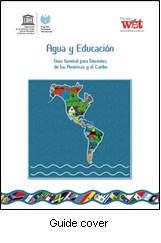 the Caribbean, which comprises more than 30 fun, creative and sound activities incorporating many of the characteristics of the EDS listed above. It is a broad curriculum that cares about knowledge, but also about doing, being, and interacting with others. It fosters enjoyable formal and non-formal learning through hands-on and relevant activities addressing life and issues outside school.
the Caribbean, which comprises more than 30 fun, creative and sound activities incorporating many of the characteristics of the EDS listed above. It is a broad curriculum that cares about knowledge, but also about doing, being, and interacting with others. It fosters enjoyable formal and non-formal learning through hands-on and relevant activities addressing life and issues outside school.
The program looks for community based, lifelong learning in order to enable and empower responsible citizens to adapt to change, recognize and solve local problems with global roots, meet other cultures with respect, and create a peaceful and sustainable society. Water education is not only about water, but about sustainability too.
Watershed approach
As stated by Wesley Powell, a watershed is “that area of land, a bounded hydrologic system, within which all living things are inextricably linked by their common water course and where, as humans settled, simple logic demanded that they become part of a community.” Nevertheless, most people do not even know they live in a watershed. The concept is not widespread and usually has no relevance within schools curricula. We are seldom taught to ‘see’ a watershed. We have road maps, political maps, vegetation maps, but we seldom see a watershed map. Thus, we seldom understand that inextricably link among those who live in a watershed.
By nature, every watershed has elements that make it similar to all other watersheds, yet each one is unique in its geographical scope, history, cultures, and water tensions. The differences among water users are heightened when combined with the differences in values and needs among countries, states or communities sharing a river. A local decision intended to solve an ecological dilemma may have deep-rooted social, political, cultural, and environmental ramifications. Besides general water education principles, distinct, relevant education, specific to each watershed is also necessary. Education must include all stakeholders within the watershed. The watershed approach facilitates education to be locally relevant and culturally appropriate. This is why watershed based education can constitute a holistic and more comprehensive approach for action at all levels.
In this regard, the UNESCO-IHP and Project WET Water and Education program for Latin America and the Caribbean, encourages its Host Institutions to develop specific watershed programs and educational materials in collaboration with local teachers, students, parents, specialists and water managers. The Project WET Series Discover a Watershed, which promotes awareness, appreciation, knowledge, stewardship and understanding of watershed topics and issues from an unbiased perspective, has served as a model and inspiration. Such is the case of the Water and Education Guide for Educator’s in Argentina, developed by the Patagonia’s Friends Association about the Limay, Neuquen and Negro rivers. Likewise, the Mexico National Water Commission published Discover a Watershed: the Santiago River, which enriches a set of previous publications of this Series developed by Project WET in collaboration with the Mexican Institute of Water Technology for the Colorado and Bravo rivers and for the Lake of Patzcuaro.
Some of the relevant topics and issues addressed in the above mentioned educator’s guides, having water as a common thread, are: international treaties for water sharing; invasive and endangered species; dam construction and its environmental and social impacts; pollution and health; water allocation among competitive uses and needs; over-exploitation of aquifers; transboundary water diversions, etc. The key point is that the lessons or activities are linked to real issues occurring within the boundaries of a watershed, making it relevant to the people living there.
Water Education as vehicle to Diversity Education
It was only recently that Diversity Education gained attention. The importance of both natural and cultural diversity was forgotten or ignored for a long time. This is surprising as there are 350 million indigenous people in the world, living in over 70 countries. Of the 6,000 estimated cultures in the world, 4,500 are indigenous. Many of them live in areas of high biological diversity and, for thousands of years, have developed lifestyles and cultures intricately tied to nature. Their value and belief systems enable them to respect and live in harmony with nature, conserving the diversity of life upon which they depend. Cultural and religious beliefs and traditional spiritual values often serve to prevent overexploitation of resources and sustain the systems in which indigenous societies live for their own benefit and that of future generations. The concept of the sustainable use of biological diversity is inherent in the value systems of indigenous and traditional societies.
According to Rigoberta Menchú, Nobel Peace Prize winner and promoter of indigenous rights, “Natural Diversity and Cultural Diversity are not inter-related things, but one and the same thing. In the Mayan view of the world, every people, every culture, is a reflection of the natural world in which we live.” (Menchú, 2002).
The great conservationist, Aldo Leopold, said: “Wilderness is the raw material out of which man has hammered the artifact called civilization. Wilderness was never a homogenous raw material. It was very diverse, and the resulting artifacts are very diverse. These differences in the end product are known as cultures. The rich diversity of the world’s cultures reflects a corresponding diversity in the wilds that gave them birth.” (Leopold, 1949).
Water education can serve as vehicle to diversity education. Specially, watershed education can work together with diversity education to provide, within an interdisciplinary framework, solid basis towards sustainability. Following, we will briefly describe some examples.
Tlalocan
As mentioned before, the Project WET Educator’s Guide was also adapted to Mexico, including local relevant cultural topics. The guide, named ¡Encaucemos el Agua! has served to train more than 13,000 teachers and non-formal educators since its first publication in 2000. One of the most relevant cultural topics addressed in the guide is related to the water deities of the Mesoamerican cultures. It explains some of the values and beliefs, related to water, in the cosmogony of ancient Teotihuacanos, Zapotecos, Mayas and Aztecs, among others.
Through the “Tlalocan” activity, the guide teaches about the rain god Tlaloc, a beneficent god who gave life and sustenance, but was also feared for his ability to send hail, thunder and lightning, and for being the lord of the powerful element of water. In Aztec iconography he is normally depicted with goggle eyes and fangs. He was associated with caves, springs and mountains. His paradise (Tlalocan), was a privileged place that only those who died in water or weather-related deaths such as drowning, lightning and water-borne diseases could reach. Archaeological evidence indicates Tlaloc was one of the most important deities of the Mesoamerican cultures, receiveing different names such as Cocijo for the Zapotecos or Chaac for the Mayas. Representations of Tlaloc and other water related deities have been found in pyramids, shrines, temples, petroglyphs, pottery, murals and codices. A colossal statue of Tlaloc (or a related deity, according to some scholars) weighing 168 tons, is the icon of the Mexico National Anthropology Museum. Tlaloc was an inspiration for famous Mexican muralists during the last century and is still present in contemporary art.
Discover a Watershed: the Lake of Patzcuaro
About 30% of the population of this closed basin in central Mexico is Purepecha. Teachers and leaders of this ethnic group were invited to participate in the development of the guide. As a result, the guide includes a special “water vocabulary” in Spanish and Purepecha, legends and activities highlighting their traditions, values and beliefs. The guide has been used as part of the ongoing Environmental Recovery Program of the Lake of Patzcuaro.
Discover a Watershed: the Santiago River
This big watershed, located in central-western Mexico, holds a huge natural and cultural diversity. Among the main indigenous groups living there are: Wixaritari (or Huicholes), Coras, Tepehuanos and Mexicaneros. The descriptive section of the guide gives special attention to these cultures. A shaman, an indigenous teacher, some artists, and some specialists were interviewed for that purpose. The developed activities were tested in both indigenous and regular schools. The cover of the book was developed by Wixaritari artists. It is a delicate yarn painting showing the confluence of the Santiago and Huaynamota rivers to the mouth into the Pacific Ocean. The yarn
painting also depicts the biodiversity and water uses within the watershed. The following activity (Si´kuli), included in the guide, teaches about an important tradition of the Wixaritari People.
Si’kuli
The Drum Celebration is one of the most important Wixaritari ceremonies, in which beautiful sacred objects, named “Si’kulis” (Eyes of God), are used as a votive offering to Tatei Haramara, (Our Mother Ocean), a primordial source of all water and guardian god of children. Si’kulis are made out of a wooden cross with strands of yarn wound around it in a diamond-shaped pattern. They symbolize the power to perceive and understand the unknown. The central diamond of Si’kulis is a sort of peeking-hole for deities, so they can see people and look after them. In this hands-on activity, students learn about this tradition and weave Si’kulis to be exchanged or given away to family and friends. Wixaritari People are known as extraordinary artists. Their creative artwork is internationally recognized for its vibrant colors and rich symbolism. It is almost always related to their cosmovision and water has a special place in it. Their wonderful yarn painting, embroidery, beadwork and weaving are famous.
Atlas of Water Cultures of Latin America and the Caribbean
Another example of water education and diversity education is the Atlas of Water Cultures developed by the Water and Culture Regional Programme of the UNESCO International Hydrological Programme for Latin America and the Caribbean. Its aim is to foster, recognize and understand the links between water and cultural diversity.
Conclusions
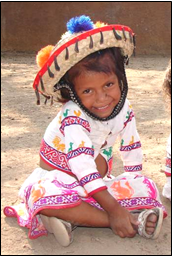
Achieving the goals of sustainable development requires encouraging lifelong learning in an informed and active population, as well as a holistic
and more comprehensive approach for action at all levels. Education must be at the core of sustainable development for either to be successful. Water education is therefore a core element. Widespread community based water education, including diversity education topics, can support citizens to gain knowledge, skills, values and perspectives that encourage sustainable livelihoods. A watershed approach, including both water education and diversity education, can be locally relevant and culturally appropriate to help develop creativity and problem-solving skills to create a more sustainable future. The Discover a Watershed Series scheme can easily incorporate diversity topics along with water education, encouraging social participation and networking. The inclusion of diversity topics in water education programs in Mexico has increased their acceptance and facilitated the use and appropriation of the educator’s guides developed. It has also contributed to a better understanding among water users, facilitating thus an Integrated Water Resources Management approach. Developing and spreading relevant watershed-based materials for educators can facilitate and boost sustainability education.
References
Comisión Nacional del Agua, 2011, Descubre una Cuenca: río Santiago, CONAGUA y Consejo de Cuenca del Río Santiago, México.
IMTA y Fundación Gonzalo Río Arronte, 2005, Descubre una Cuenca: el lago de Pátzcuaro, IMTA, Morelos, México.
IMTA y The Watercourse, 2001, Currículum y guía de actividades para maestros ¡Encaucemos el Agua! México.
Leopold, Aldo, 1949, A Sand County Almanac (Outdoor Essays and Reflections), Oxford University Press, New York.
Menchú, Rigoberta, 2002, Natural Diversity and Cultural Diversity. Speech at the World Summit on Sustainable Development, Johannesburg.
Project WET International Foundation, 2004, Discover a Watershed: Rio Colorado, Project WET, Bozeman, Montana, U.S.A.
The Watercourse, 2001, Discover a Watershed: Rio Grande/Río Bravo, Project WET, Bozeman, Montana, U.S.A.
UNESCO-IHP and Project WET, 2008, Water and Education: General Guide for Teachers of Latin America and the Caribbean, Montevideo.
UNESCO Bangkok, 2007, Education for Sustainable Development: Linking learning and happiness, UNESCO Bangkok.
UNESCO-UNEP, 2003, Cultural Diversity and Biodiversity for Sustainable Development, High Level Roundtable, September 2002, Johannesburg, World Summit on Sustainable Development, UNEP, Nairobi.
Websites:
Education for Sustainable Development (UNESCO website)
– www.unesco.org/new/en/education/themes/leading-the-international-agenda/education-for-sustainable-development
Project WET Foundation: www.projectwet.org
UNESCO IHP for Latin America and the Caribbean
– Main webpage: www.unesco.org.uy/phi
– Water and Education Regional Programme: www.unesco.org.uy/phi/en/presentation.html
– Water and Culture Regional Programme: www.unesco.org.uy/phi/aguaycultura
– Atlas of Water Cultures of Latin America and the Caribbean:
www.unesco.org.uy/phi/aguaycultura/es/inicio/estudios-agua-y-cultura-en-la-region.html







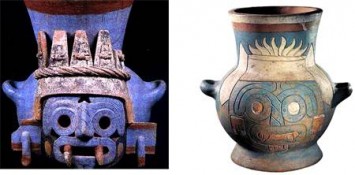
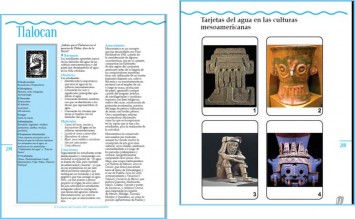
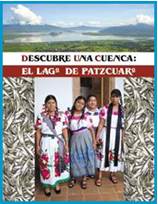
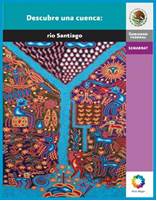
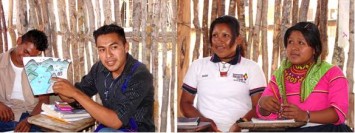
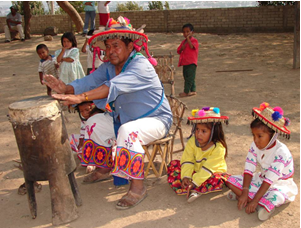
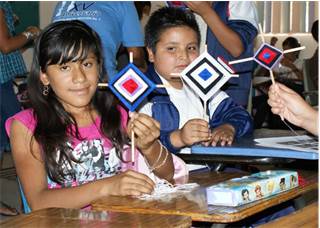

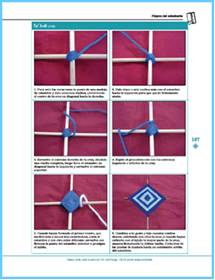



 Rita Vázquez del Mercado works for the Mexican Institute of Water Technology (IMTA) since 1992 and on water education topics since 1999. She is a graduate in Business Management, holds a master degree in Quality Management and lives in Cuernavaca, Mexico. Rita was the National Coordinator of Project WET Mexico (¡Encaucemos el Agua!) from 1999 to 2007. She was the Regional Coordinator of the UNESCO-IHP and Project WET joint programme, Water and Education for the Americas and the Caribbean, from 2006 to 2010, remaining as Adjoint Coordinator up to date. She served as researcher, writer and member of the leadership team of the Discover a Watershed projects for the Bravo, Colorado and Santiago rivers, and for the lake of Patzcuaro. E-mail: rvazquez@tlaloc.imta.mx.
Rita Vázquez del Mercado works for the Mexican Institute of Water Technology (IMTA) since 1992 and on water education topics since 1999. She is a graduate in Business Management, holds a master degree in Quality Management and lives in Cuernavaca, Mexico. Rita was the National Coordinator of Project WET Mexico (¡Encaucemos el Agua!) from 1999 to 2007. She was the Regional Coordinator of the UNESCO-IHP and Project WET joint programme, Water and Education for the Americas and the Caribbean, from 2006 to 2010, remaining as Adjoint Coordinator up to date. She served as researcher, writer and member of the leadership team of the Discover a Watershed projects for the Bravo, Colorado and Santiago rivers, and for the lake of Patzcuaro. E-mail: rvazquez@tlaloc.imta.mx.  Rosalinda Uribe works for the Mexican Institute of Water Technology since 1992 and on water education topics since 1999. She is a Psychologist, holds a master degree in Management and lives in Cuernavaca, Mexico. Rosalinda served as national facilitator of Project WET Mexico (¡Encaucemos el Agua!) from 1999 to 2007 and currently is an accredited facilitator of the UNESCO-IHP and Project WET joint programme, Water and Education for the Americas and the Caribbean. She served as researcher, writer and member of the leadership team of the Discover a Watershed projects for the Colorado and Santiago rivers, and for the lake of Patzcuaro. E-mail: ruribe@tlaloc.imta.mx.
Rosalinda Uribe works for the Mexican Institute of Water Technology since 1992 and on water education topics since 1999. She is a Psychologist, holds a master degree in Management and lives in Cuernavaca, Mexico. Rosalinda served as national facilitator of Project WET Mexico (¡Encaucemos el Agua!) from 1999 to 2007 and currently is an accredited facilitator of the UNESCO-IHP and Project WET joint programme, Water and Education for the Americas and the Caribbean. She served as researcher, writer and member of the leadership team of the Discover a Watershed projects for the Colorado and Santiago rivers, and for the lake of Patzcuaro. E-mail: ruribe@tlaloc.imta.mx. 

I wanted to write you that tiny observation in order to thank you again on your great guidelines you have shown on this page. It is really remarkably generous of you to offer unreservedly what numerous people could have supplied as an ebook to end up making some dough for themselves, particularly considering the fact that you could have tried it in case you considered necessary. Those principles likewise worked to provide a great way to comprehend some people have the identical zeal similar to my personal own to see significantly more with respect to this problem. I know there are many more pleasurable situations ahead for folks who discover your blog.